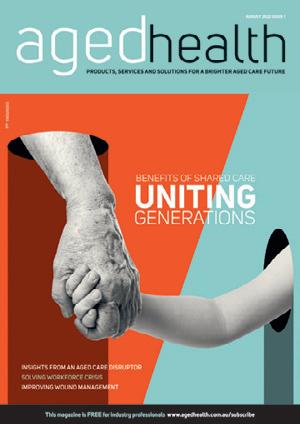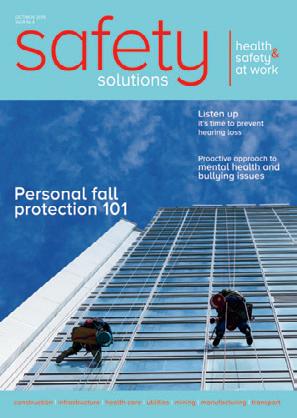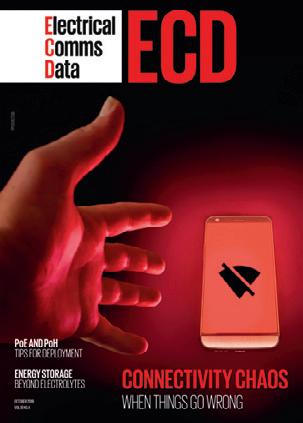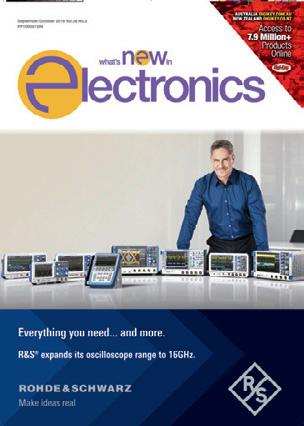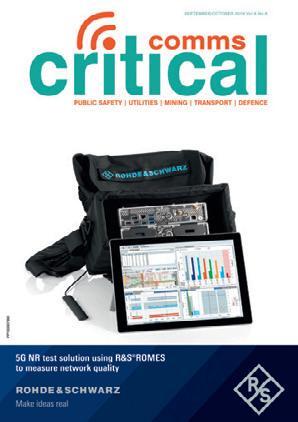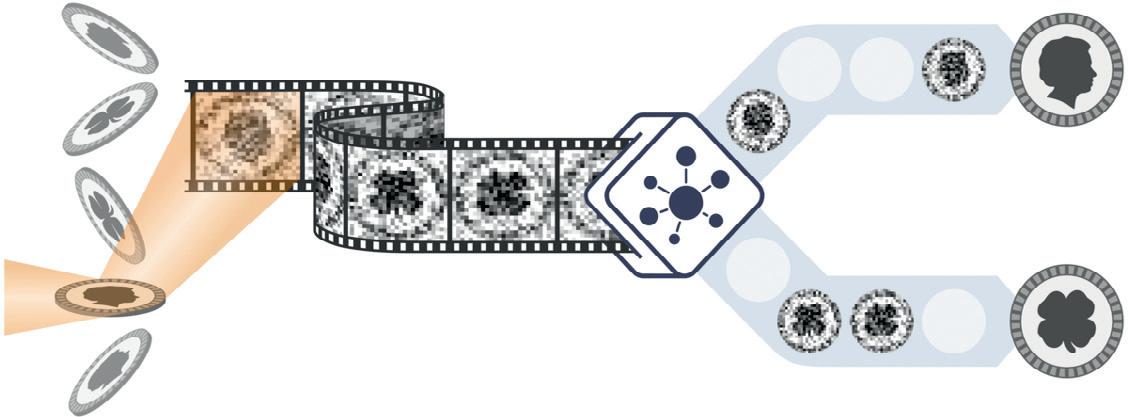
6 minute read
New X-ray technique to image fluctuations in materials
Scientists from Germany and the US have developed a revolutionary new method for capturing high-resolution images of fluctuations in materials at the nanoscale using powerful X-ray sources. The technique, which they call coherent correlation imaging (CCI), allows for the creation of sharp, detailed movies without damaging the sample by excessive radiation.
By using an algorithm to detect patterns in underexposed images, CCI opens paths to previously inaccessible information. The team demonstrated CCI on samples made of thin magnetic layers, with their results published in the journal Nature
The microscopic realm of the world is constantly in motion and marked by unceasing alteration. Even in seemingly unchanging solid materials, these fluctuations can give rise to unusual properties — one example being the lossless transmission of electrical current in high-temperature superconductors. Fluctuations are particularly pronounced during phase transitions, where a material changes its state, such as from solid to liquid during melting. Scientists also investigate very different phase transitions, such as from non-conductive to conductive, non-magnetic to magnetic, and changes in crystal structure. Many of these processes are utilised in technology, and also play a crucial role in the functioning of living organisms.
Too much illumination might damage the sample
Studying these processes in detail, however, is a difficult task, and capturing a movie of these fluctuation patterns is even more challenging. This is because the fluctuations happen quickly and take place at the nanometre scale — a millionth of a millimetre. Even the most advanced high-resolution X-ray and electron microscopes are unable to capture this rapid, random motion. The problem is fundamentally rooted, as exemplified by this principle of photography: in order to capture a clear image of an object, a certain level of illumination is required. To magnify the object (zoom in), more illumination is needed. Even more light is necessary when attempting to capture a fast motion with a short exposure time.
Ultimately, increasing the resolution and decreasing the exposure time leads to a point where the object would be damaged or even destroyed by the illumination required. This is exactly the point science has reached in recent years: snapshots taken with free-electron lasers, the most intense X-ray sources available today, inevitably led to the destruction of the sample under study. As a result, capturing a movie of these random processes consisting of multiple images has been deemed impossible.
Using an algorithm to detect patterns in dimly lit pictures
The international team of scientists has now found a solution to this problem, having realised that the fluctuation patterns in materials are often not entirely random. By focusing on a small portion of the sample, the researchers observed that certain spatial patterns repeatedly emerged, but the exact timing and frequency of these patterns were unpredictable.
The principle of CCI is used to image a random process, such as a coin toss. A single, brief image of the coin may not be sufficiently exposed to clearly identify the image on the coin. However, a new algorithm can sort and combine multiple images to produce clear images of both sides of the coin, which can then be accurately assigned to the moment of exposure. Image credit: Christopher Klose/Max Born Institute.
The scientists thus developed CCI, a novel non-destructive imaging method. To create a movie, they take multiple snapshots of the sample in quick succession while reducing the illumination enough to keep the sample intact; this results in individual images where the fluctuation pattern in the sample becomes indistinct. Nevertheless, the images still contain sufficient information to separate them into groups. To accomplish this, the team first had to create a new algorithm that analyses the correlations between the images, hence the method’s name. The snapshots within each group are very similar and thus likely to originate from the same specific fluctuation pattern. It is only when all shots in a group are viewed together that a clear image of the sample emerges. The scientists are now able to rewind the film and associate each snapshot with a clear image of the sample’s state at that moment in time.
Filming the ‘dance of domains’ in magnetic layers
The scientists created the method to tackle a specific problem in the field of magnetism: microscopic patterns that occur in thin ferromagnetic layers. These layers are divided into regions known as domains, in which the magnetisation points either upward or downward. Similar magnetic films are used in modern hard drives where the two different types of domains encode bits with ‘0’ or ‘1’. Until now, it was believed that these patterns were extremely stable, but the scientists wanted to confirm if this was really true.
To answer this question, the team investigated a sample consisting of such a magnetic layer at the National Synchrotron Light Source II on Long Island, using the newly developed CCI method. Indeed, the patterns remained unchanged at room temperature. But at a slightly elevated temperature of 37°C, the domains began to move back and forth erratically, displacing each other. The scientists observed this ‘dance of the domains’ for several hours. Subsequently, they created a map showing the preferred location of the boundaries between the domains. This map and the movie of the movements led to a better understanding of the magnetic interactions in the materials, promoting future applications in advanced computer architectures.
New opportunities for materials research
The scientists’ next objective is to employ the novel imaging method on free-electron lasers, such as the European XFEL in Hamburg, to gain deeper insights into even faster processes at the smallest length scales. They are confident that this method will improve our understanding of the role of fluctuations and stochastic processes in the properties of modern materials and, as a result, discover new methods of utilising them in a more directed manner.
ASID Annual Scientific Meeting 2023
April 3–5, Adelaide
The ASID Annual Scientific Meeting serves to connect clinicians, microbiologists and other health professionals with a common interest in infectious diseases and provides a friendly forum for the exchange of scientific advances in the prevention, diagnosis and management of clinical infectious diseases.
International speakers will offer expert global perspectives, while Australasian research and expertise will be highlighted with keynote lectures and symposia. https://asid.eventsair.com/asid-asm-2023/
Cutting Edge Symposium: Efficient use of plant biomass for different feedstocks
March 7–9, Canberra https://events.csiro.au/Events/2022/August/25/ Efficient-use-of-plant-biomass-for-different-feedstocks
SMP (Science Meets Parliament) Online
March 7–9, online https://sta.eventsair.com/science-meetsparliament-2023/
GeneMappers 2023
March 8–10, Hobart https://www.genemappers2023.org/
Australasian Exploration Geoscience Conference
March 13–18, Brisbane https://2023.aegc.com.au/
SMP (Science Meets Parliament) On The Hill
March 22, Canberra https://sta.eventsair.com/science-meetsparliament-2023/
Building the SABRE Biosecurity Alliance

March 23, Canberra https://sta.eventsair.com/science-meetsparliament-2023/
TSANZSRS 2023
March 25–28, Christchurch https://www.tsanzsrsasm.com/
35th ISE Topical Meeting: Electrochemistry for energy, environment and health
May 7–10, Gold Coast https://topical35.ise-online.org/
Science on the Swan 2023
May 8–10, Perth https://scienceontheswan.com.au/
AusMedtech 2023
May 24–25, Adelaide https://www.ausmedtech.com.au/
EcoSummit 2023
June 13–17, Gold Coast https://ecosummitcongress.com/
Cutting Edge Symposium: Locking Carbon in Minerals
June 19–23, Perth https://events.csiro.au/Events/2022/July/28/ Locking-Carbon-in-Minerals
21st International Conference on Nucleation and Atmospheric Aerosols
June 26–30, Brisbane https://www.icnaa2023.com.au/
The Australian Society for Microbiology Annual National Meeting
July 3–6, Perth https://www.theasmmeeting.org.au/
20th International Conference on Biological Inorganic Chemistry
July 16–21, Adelaide https://icbic2023.org/
31st International Symposium on Lepton Photon Interactions at High Energies
July 17–21, Melbourne https://www.leptonphoton2023.org/
National Science Week 2023
August 12–20, Australia-wide https://www.scienceweek.net.au/
IUCr 2023
August 22–29, Melbourne http://iucr2023.org/
Australasian Radiation Protection Society 2023 Conference
October 22–26, Gold Coast https://arpsconference.com.au/
AusBiotech 2023
November 1–3, Brisbane https://www.ausbiotechnc.org/
ASC 50th Annual Scientific Meeting
November 3–5, Surfers Paradise https://www.cytology.com.au/annual-scientificbusiness-meeting
Acoustics 2023
December 4–8, Sydney https://acoustics23sydney.org/
Westwick-Farrow Media
A.B.N. 22 152 305 336 www.wfmedia.com.au
Head Office Unit 7, 6-8 Byfield Street, (Locked Bag 2226) North Ryde BC NSW 1670, AUSTRALIA
Ph: +61 2 9168 2500
Editor Lauren Davis LLS@wfmedia.com.au
Publishing Director/MD
Geoff Hird
Art Director/Production Manager Julie Wright
Art/Production
Linda Klobusiak, Marija Tutkovska
Circulation
Dianna Alberry circulation@wfmedia.com.au
Copy Control Mitchie Mullins copy@wfmedia.com.au
Advertising Sales Sales Manager: Kerrie Robinson Ph:0400 886 311 krobinson@wfmedia.com.au
Nikki Edwards Ph: 0431 107 407 nedwards@wfmedia.com.au
Tim Thompson Ph: 0421 623 958 tthompson@wfmedia.com.au
If you have any queries regarding our privacy policy please email privacy@wfmedia.com.au
Printed and bound by Dynamite Printing
Print Post Approved PP100008671
ISSN No. 2203-773X
All material published in this magazine is published in good faith and every care is taken to accurately relay information provided to us. Readers are advised by the publishers to ensure that all necessary safety devices and precautions are installed and safe working procedures adopted before the use of any equipment found or purchased through the information we provide. Further, all performance criteria was provided by the representative company concerned and any dispute should be referred to them. Information indicating that products are made in Australia or New Zealand is supplied by the source company. Westwick-Farrow Pty Ltd does not quantify the amount of local content or the accuracy of the statement made by the source.
To Industry And Business Professionals
